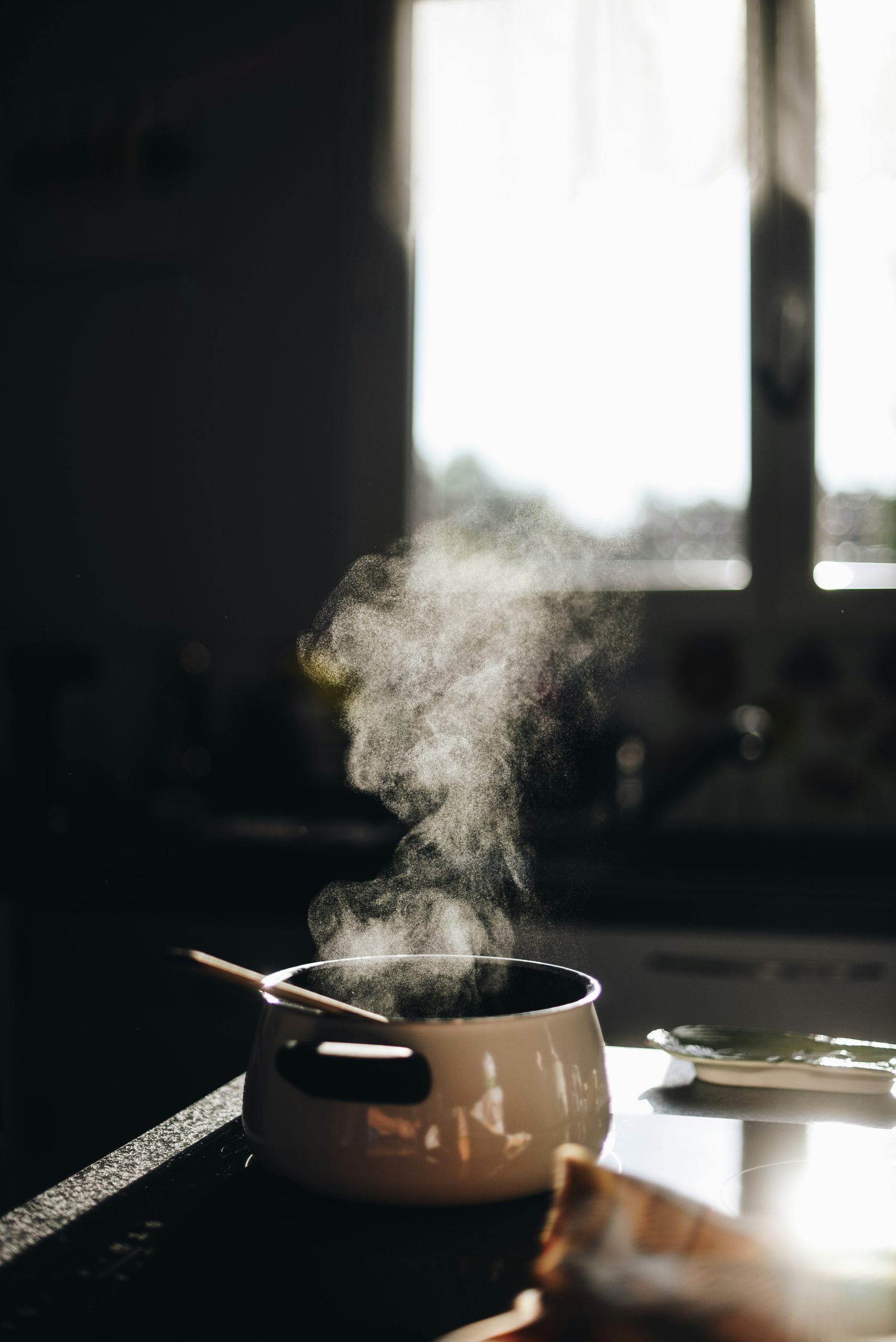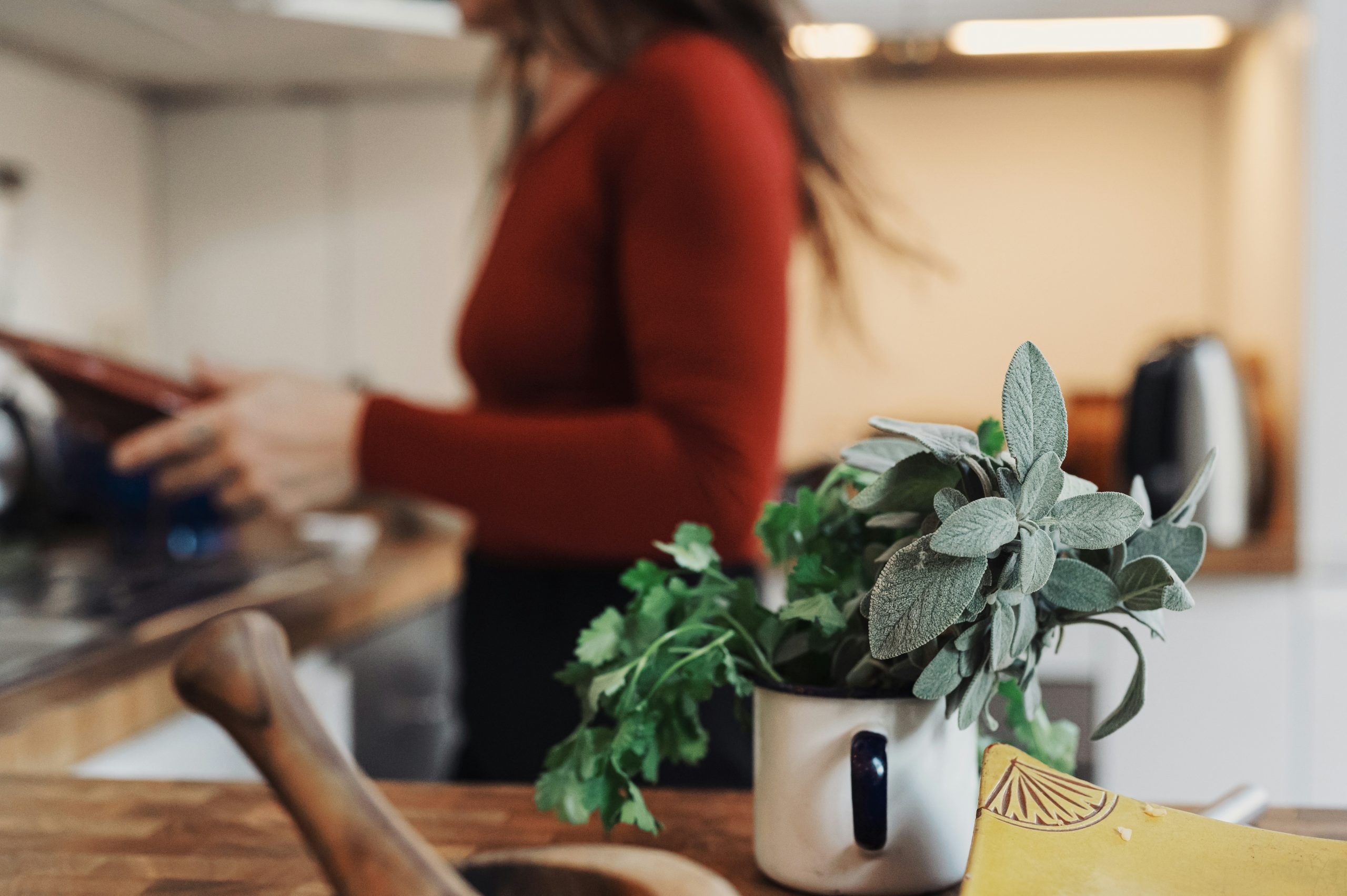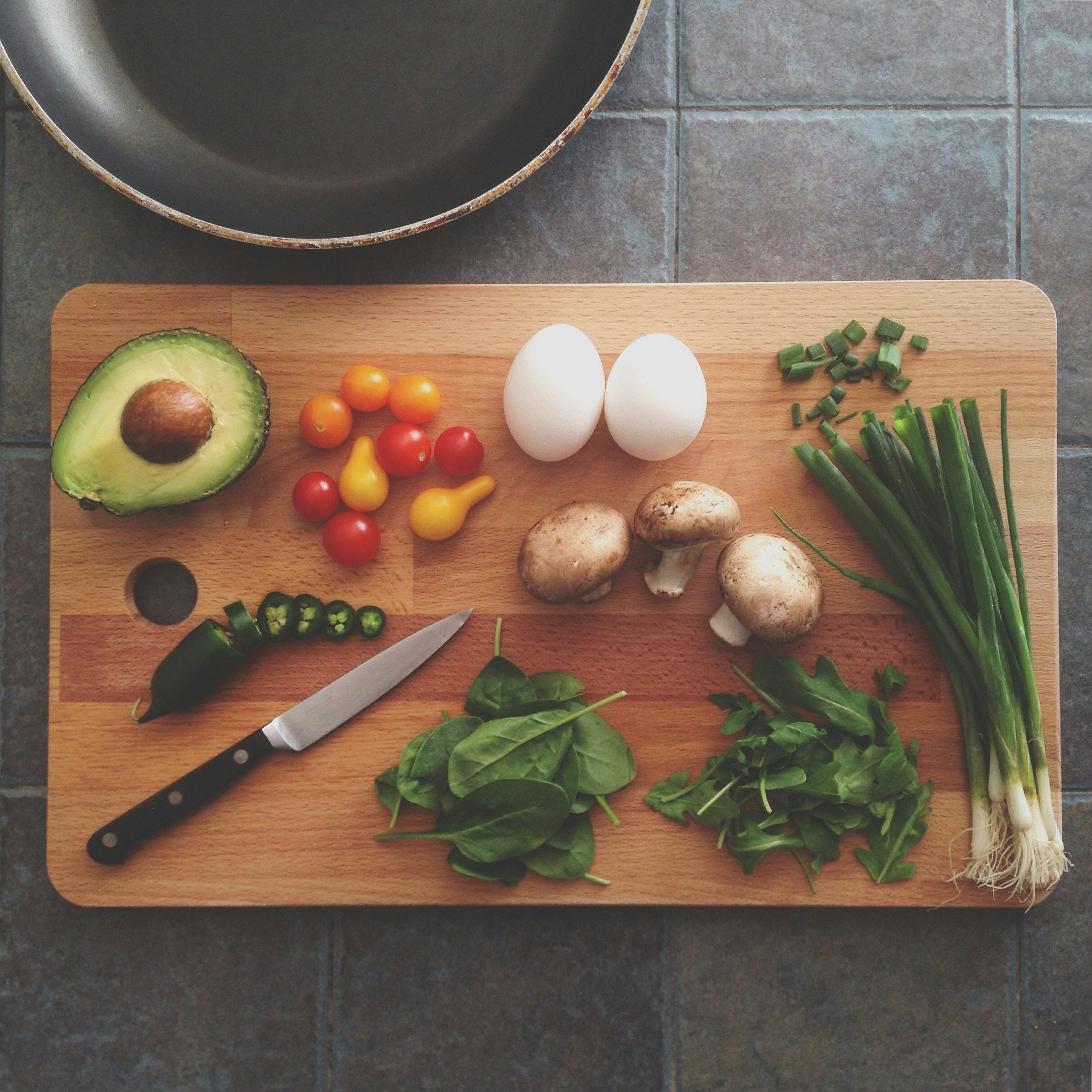Ad Blocker Detected
Our website is made possible by displaying online advertisements to our visitors. Please consider supporting us by disabling your ad blocker.
Get ready to revolutionize your cooking routine with the help of an electric pressure cooker! With its modern technology and eco-friendly features, sustainable cooking has never been easier. Say goodbye to long hours spent over the stove and hello to delicious meals prepared in a fraction of the time. In this article, we will explore the benefits of using an electric pressure cooker, from saving energy and reducing water consumption to preserving nutrients and minimizing food waste. So, get ready to embark on a culinary adventure that not only benefits your taste buds but also benefits the planet.

What is an Electric Pressure Cooker?
Definition and Functionality
An electric pressure cooker is a kitchen appliance that utilizes pressure and steam to cook food quickly and efficiently. It consists of a sealed pot, a heating element, a pressure sensor, and a control panel. The pot is filled with food and liquid, and when the pressure cooker is activated, the heat generates steam, building up pressure inside the pot. This increased pressure raises the boiling point of water and significantly reduces cooking time. The steam is trapped inside the sealed pot, allowing food to cook evenly and retain its natural flavors and nutrients.
Advantages of Using an Electric Pressure Cooker
Time and Energy Efficiency
One of the key advantages of using an electric pressure cooker is its time and energy efficiency. Traditional cooking methods often require long hours of simmering or boiling, but an electric pressure cooker can significantly reduce cooking time. By cooking food under high pressure, it can cook meals up to 70% faster compared to conventional methods. This time-saving feature allows you to prepare wholesome, homemade meals even on busy days. Moreover, the shorter cooking time translates to lower energy consumption, which contributes to reducing your carbon footprint.
Preserving Nutrients
The sealed environment of an electric pressure cooker helps to preserve the nutrients in food. By cooking food quickly at a high temperature, it minimizes the loss of water-soluble vitamins and minerals that typically occur during traditional cooking methods. The shorter cooking time also prevents the breakdown of nutrients due to heat exposure. Consequently, you can enjoy healthier meals that retain more vitamins, minerals, and other beneficial compounds.
Versatility in Cooking
Electric pressure cookers offer a wide range of cooking functions, making them incredibly versatile in the kitchen. They can be used for various cooking techniques, such as sautéing, steaming, slow cooking, and even baking. With programmable settings and pre-set functions, you can easily prepare a variety of dishes, from soups and stews to rice, beans, and even desserts. This versatility reduces the need for multiple appliances, saving you space, money, and resources.
Reduced Carbon Footprint
Cooking with an electric pressure cooker can contribute to reducing your carbon footprint. As mentioned earlier, the shorter cooking time means lower energy consumption. By using less energy, you can help reduce greenhouse gas emissions and mitigate climate change. Additionally, the versatility of an electric pressure cooker reduces the need for separate appliances, saving energy and resources by consolidating kitchen equipment.
Sustainable Features of an Electric Pressure Cooker
Energy Efficiency
Electric pressure cookers are designed to be energy-efficient. They use a sealed cooking chamber and build up pressure to quickly cook food, which requires less energy compared to conventional stovetop cooking. Many electric pressure cookers also have energy-saving features, such as programmable timers and automatic shut-off functions. These features help minimize energy waste and ensure that the cooker operates efficiently.
Reduced Water Consumption
Compared to conventional cooking methods that often require excess water for boiling and simmering, an electric pressure cooker uses significantly less water. The steam generated during the cooking process is trapped inside the sealed pot, allowing for minimal water evaporation. This reduced water consumption not only helps conserve this precious resource but also saves energy by requiring less time and energy to heat the water.
Reduced Food Waste
Electric pressure cookers can help reduce food waste by transforming tough cuts of meat and fibrous vegetables into tender, flavorful dishes. By using the high pressure and steam, the cooker can break down tough fibers and transform ingredients that might otherwise be discarded. Additionally, pressure cookers are excellent for batch cooking, allowing you to prepare larger quantities of food and store leftovers for future meals. This reduces the chances of food spoilage and waste.
Choosing an Electric Pressure Cooker for Sustainability
Energy Star Ratings
When choosing an electric pressure cooker, look for models with Energy Star ratings. Energy Star is a certification program that identifies energy-efficient appliances. By selecting an Energy Star-rated pressure cooker, you can ensure that the appliance has met specific energy efficiency standards set by the Environmental Protection Agency (EPA). This helps you make an informed choice in terms of sustainability and energy conservation.
Material Selection
Consider the material of the pressure cooker before making a purchase. Stainless steel models are considered more sustainable than those made of non-stick materials because they are more durable, easy to clean, and do not release potentially harmful chemicals into the environment. Additionally, stainless steel is recyclable, making it a more environmentally friendly choice.
Capacity and Size
Choose an electric pressure cooker with an appropriate capacity for your needs. Opting for a size that matches your usual batch size or family size will help minimize energy waste. A pressure cooker that is too large for your needs will require more energy to heat up, while a small one may not accommodate the quantity you need. Consider your regular cooking habits and the number of people you usually cook for when selecting a suitable size.
Additional Eco-friendly Features
Some electric pressure cookers come with additional eco-friendly features that can enhance sustainability. Look for models that have delay start or programmable timers, which allow you to take advantage of off-peak energy hours. This feature can help reduce your overall energy consumption. Additionally, look for cookers with a low-energy or energy-saving mode, as these settings can further minimize energy usage during the cooking process.

Sustainable Cooking Tips with an Electric Pressure Cooker
Use Seasonal and Local Ingredients
A sustainable cooking practice is to use seasonal and locally sourced ingredients whenever possible. By choosing produce that is in season, you can support local farmers, reduce the carbon footprint associated with long-distance transportation, and enjoy the freshest flavors. Electric pressure cookers allow you to quickly cook a variety of ingredients, making it easier to incorporate seasonal produce into your meals.
Reduce Cooking Time to Save Energy
One of the primary benefits of an electric pressure cooker is its ability to reduce cooking time. Take full advantage of this by adjusting your recipes and cooking times accordingly. By reducing the cooking time compared to traditional methods, you can save energy and resources while still achieving delicious results. Experiment with different cooking times to find the perfect balance between efficiency and taste.
Practice Batch Cooking for Meal Planning
Batch cooking is a sustainable technique that involves cooking larger quantities of food and storing leftovers for future meals. With an electric pressure cooker, you can easily prepare large batches of soups, stews, or grains, which can be portioned and stored for later consumption. This reduces the need for frequent cooking and decreases food waste by utilizing leftovers effectively.
Reuse Cooking Liquid and Scraps for Stock
Avoid wasting potential flavor and nutrients by reusing cooking liquid and scraps to make homemade stocks. After cooking meats or vegetables in the pressure cooker, save the leftover liquid and any vegetable scraps to create a flavorful base for future recipes. By making your own stock, you can reduce the need for store-bought, packaged alternatives, and minimize waste.
Minimize Plastic Usage in Packaging
When shopping for ingredients, choose bulk or package-free options whenever possible. Many grocery stores offer bulk sections where you can purchase grains, beans, and spices without packaging. This reduces the consumption of single-use plastics and promotes a more sustainable shopping experience. Consider bringing your own containers and bags to further minimize the use of disposable packaging.
Sustainable Recipes and Cooking Techniques
Plant-based Meals
One of the most sustainable choices you can make is to incorporate more plant-based meals into your diet. With an electric pressure cooker, you can easily cook a wide variety of plant-based dishes, such as lentil curry, vegetable soups, or bean stews. Legumes, grains, and vegetables are known for their low environmental impact, making them excellent choices for sustainable cooking.
One-pot Recipes
Electric pressure cookers are perfect for one-pot recipes that allow you to cook an entire meal in a single pot. This minimizes the number of cooking utensils and energy consumed during the cooking process. Try recipes like chili, risottos, or paella, where you can combine different ingredients and flavors to create a delicious and sustainable meal.
Cooking Dry Legumes
Dry legumes, such as beans and lentils, are affordable, nutritious, and have a significantly lower environmental footprint compared to their canned counterparts. An electric pressure cooker can cook dry legumes quickly and efficiently, without the need for pre-soaking. By incorporating more dry legumes into your meals, you can reduce packaging waste and promote sustainable cooking practices.
Using Timer Functions to Avoid Overcooking
Electric pressure cookers often come with programmable timer functions that allow you to set the cooking time and delay the start of the cooking process. Take advantage of this feature to avoid overcooking or undercooking your meals. By precisely timing the cooking process, you can ensure that your food retains its texture and flavor while minimizing energy waste.
Pressure Canning for Food Preservation
Pressure canning is a method of food preservation that involves using an electric pressure cooker to seal and sterilize jars of food. By pressure canning, you can extend the shelf life of seasonal fruits and vegetables, reducing food waste and allowing you to enjoy your favorite produce year-round. It is important to follow proper canning procedures to ensure the safety and quality of the preserved food.

Maintenance and Care for Longevity
Cleaning and Descaling
Proper cleaning and descaling are essential for maintaining the longevity and efficiency of your electric pressure cooker. Follow the manufacturer’s instructions for cleaning the pot, lid, and other removable parts. Regularly check for mineral deposits and descale the cooker as needed to ensure optimal performance. Clean the sealing gasket thoroughly to prevent any build-up that may affect the cooker’s sealing ability.
Replacing Parts and O-rings
Over time, certain parts of your electric pressure cooker may wear out or become damaged. It is important to replace these parts promptly to avoid any potential safety hazards or compromised performance. Common parts that may need replacement include rubber gaskets or O-rings, safety valves, and pressure release mechanisms. Refer to the user manual or contact the manufacturer for guidance on sourcing and replacing these parts.
Proper Storage
When the electric pressure cooker is not in use, ensure that it is stored properly. Clean and dry the pot and lid before storing them to prevent any moisture or odors from developing. Keep the cooker in a cool, dry place, away from direct sunlight or extreme temperatures. Proper storage practices help maintain the functionality and lifespan of your pressure cooker.
Sustainable Accessories for Electric Pressure Cooking
Silicone Food Storage Lids
Silicone food storage lids are reusable alternatives to single-use plastic wraps or aluminum foil. These lids are flexible, airtight, and can fit various sizes of bowls and containers. By using silicone food storage lids, you can keep your leftovers fresh without the need for disposable packaging, reducing plastic waste and promoting sustainability in your kitchen.
Stainless Steel Cooking Trivets
Cooking trivets made of stainless steel are versatile and durable accessories for electric pressure cookers. They can be used to elevate food, preventing it from coming in direct contact with the liquid during cooking. Stainless steel trivets are easy to clean, long-lasting, and free from harmful chemicals. By using these trivets, you can cook multiple food items simultaneously without sacrificing flavor or efficiency.
Bamboo or Silicone Steamer Baskets
Steaming is a healthy and sustainable cooking method that helps retain the natural flavors and nutrients of food. Bamboo or silicone steamer baskets are excellent accessories for electric pressure cookers that allow you to steam vegetables, dumplings, or fish effortlessly. These steamer baskets are reusable, eco-friendly alternatives to single-use plastic or aluminum steamers, promoting sustainable cooking practices.
Reusable Silicone Food Pouches
Reusable silicone food pouches are an eco-friendly alternative to disposable plastic bags. They are ideal for storing portions of soup, stews, or other liquid-based meals. With their airtight seal and durability, these pouches can be used multiple times, eliminating the need for single-use plastic bags or containers. Reusable silicone food pouches are dishwasher-safe, making them easy to clean and maintain.
Sourcing Sustainable Ingredients
Farmer’s Markets
Shopping at farmer’s markets is a great way to support local farmers and reduce the environmental impact of your food choices. Locally grown produce tends to have a smaller carbon footprint since it does not have to travel long distances to reach your table. By connecting directly with farmers, you can learn about their farming practices and choose ingredients that align with your sustainability values.
Community Supported Agriculture (CSA)
Joining a Community Supported Agriculture (CSA) program allows you to receive regular deliveries of seasonal, locally grown produce directly from a farm. By becoming a member of a CSA, you support sustainable agricultural practices and contribute to the local economy. CSA programs often prioritize organic and low-impact farming methods, ensuring that you have access to fresh and sustainable ingredients.
Organic and Fair Trade Choices
Choosing organic and fair trade products is another way to make sustainable choices. Organic farming practices minimize the use of synthetic chemicals, protecting soil health and biodiversity. Fair trade products support farmers and workers in developing countries, ensuring fair wages and improving social and environmental sustainability. Look for organic and fair trade labels when shopping for ingredients to align with your commitment to sustainable cooking.
Bulk and Package-Free Options
Many grocery stores now offer bulk sections where you can purchase items like grains, beans, nuts, and spices without packaging. By bringing your own reusable containers and bags, you can minimize the use of single-use packaging and reduce waste. Additionally, some stores have started offering package-free sections where you can refill your own containers with various products. Choosing bulk and package-free options contributes to a more sustainable and zero-waste lifestyle.
Overall Impact of Sustainable Cooking with an Electric Pressure Cooker
Energy and Resource Savings
Sustainable cooking with an electric pressure cooker can lead to significant energy and resource savings. The shorter cooking time and energy-efficient design of electric pressure cookers help reduce overall energy consumption. By utilizing this appliance, you can minimize water usage, optimize energy efficiency, and contribute to a more sustainable cooking routine.
Reduced Carbon Emissions
Electric pressure cookers help reduce carbon emissions by using less energy during the cooking process compared to traditional methods. By shortening cooking times and optimizing energy use, you can lower your carbon footprint and contribute to mitigating climate change. Choosing sustainable ingredients and practicing environmentally conscious cooking techniques further enhance these carbon emission reductions.
Positive Health Effects
Sustainable cooking with an electric pressure cooker can have positive health effects. The shorter cooking time and sealed environment help retain more nutrients in the food. By opting for seasonal and locally sourced ingredients, you can enjoy fresher and more nutritious meals. Incorporating more plant-based meals and reducing the consumption of processed foods can lead to improved overall health and well-being.
Promoting Sustainable Food System
By adopting sustainable cooking practices and using an electric pressure cooker, you contribute to promoting a more sustainable food system. Supporting local farmers, choosing sustainable ingredients, and reducing food waste are all important steps towards creating a more environmentally conscious and resilient food system. By making sustainable choices in your kitchen, you can inspire others and be part of a global movement towards a more sustainable future.

